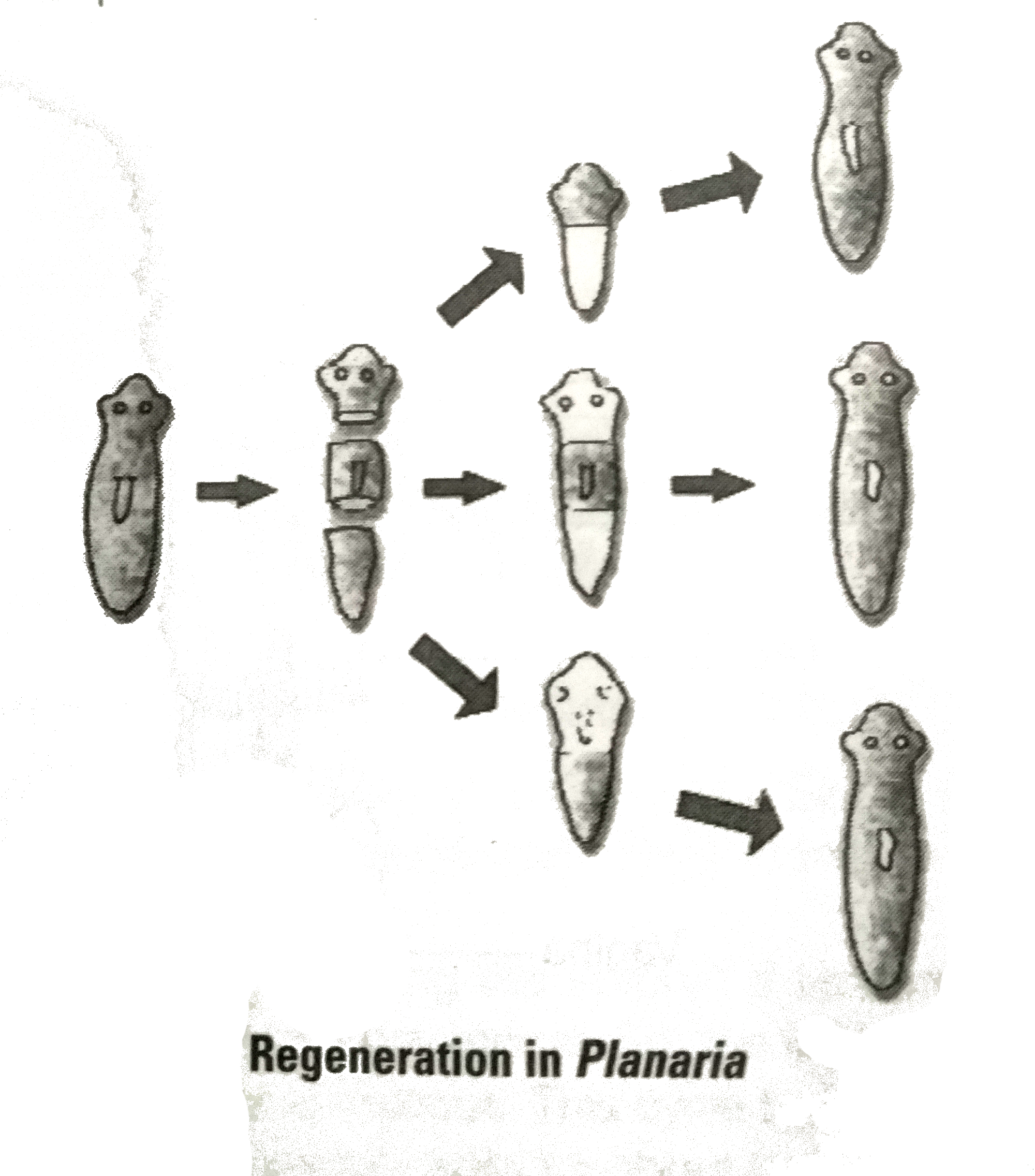Why are budding, fragmentation and regeneration all considered as asexual types of reproduction? With neat diagrams explain the process of regeneration in Planaria.
Video Solution
Text Solution
Budding, fragmentation and regeneration are considered as asexual type of reproduction because all of them involve only one parent and gamete are not involved in reproduction.
Regeneration in Planaria It can be cut into any number of pieces and each piece grows into a complete organism. This known as regeneration (see fig.) Regeneration is carried out by specialised cells, These cells proliferate and make large number of cells. From this mass of cells, different cells undergo changes to become various cell types and tissues. These changes take place in an organised sequence referred to as development.

|
Topper's Solved these Questions
Similar Questions
Knowledge Check
Assertion (A): Budding, fragmentation and regeneration are all considered as asexual types of reproduction.
Reason (R) : They involve only one parent.ABoth (A) and (R) are true and (R) is correct explanation of the assertionBBoth (A) and (R) are true but (R) is not the correct explanation of the assertionC(A) is true but (R) is false.D(A) is false but (R) is true.Which type of regeneration in found in planaria?
AMorphallaxisBEpimorphosisCCompensatoryDBoth 1 & 2
Explain regeneration in Planaria.
View SolutionWhy is vegetative propagation also considered as a type of asexual reproduction ?
View SolutionWhy are framentation , spore formation, fission and budding considered asexual reproduction ?
View SolutionExplain the terms fission and regeneration as used in relation to reproduction
View SolutionExplain the term regeneration as used in relation to reproduction.
View SolutionExplain the process of budding with sutiable diagram
View Solution
